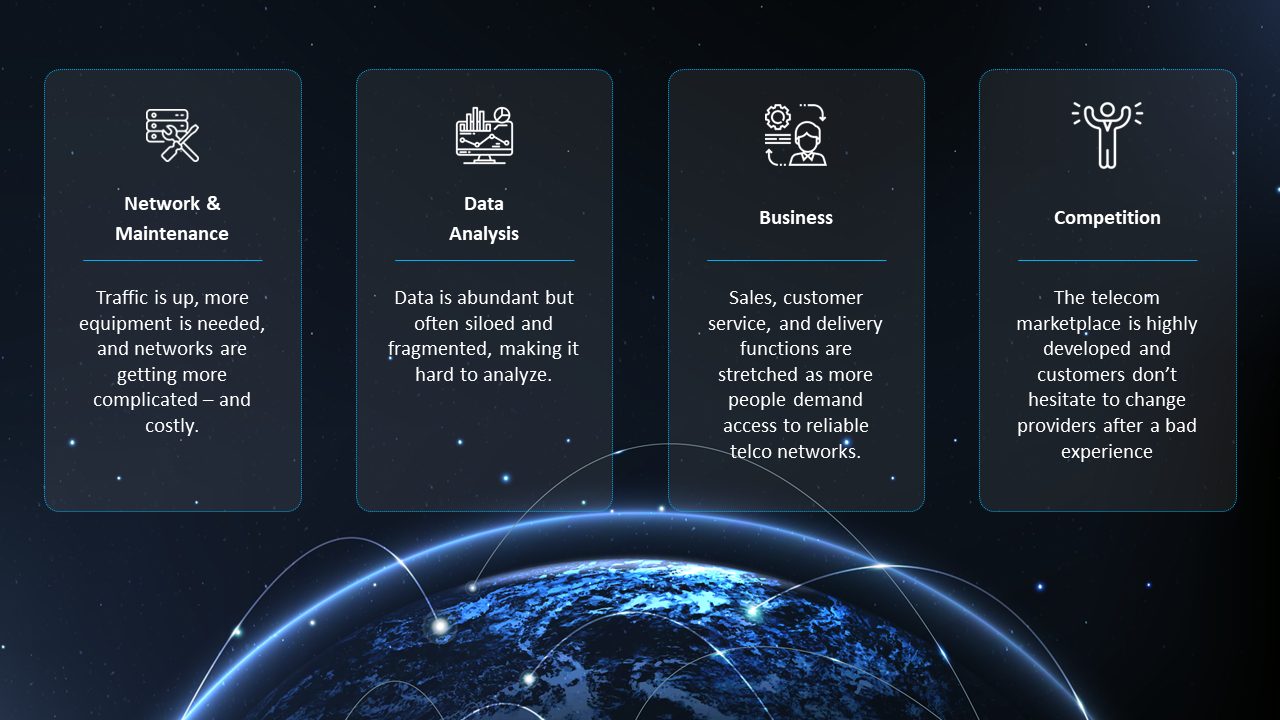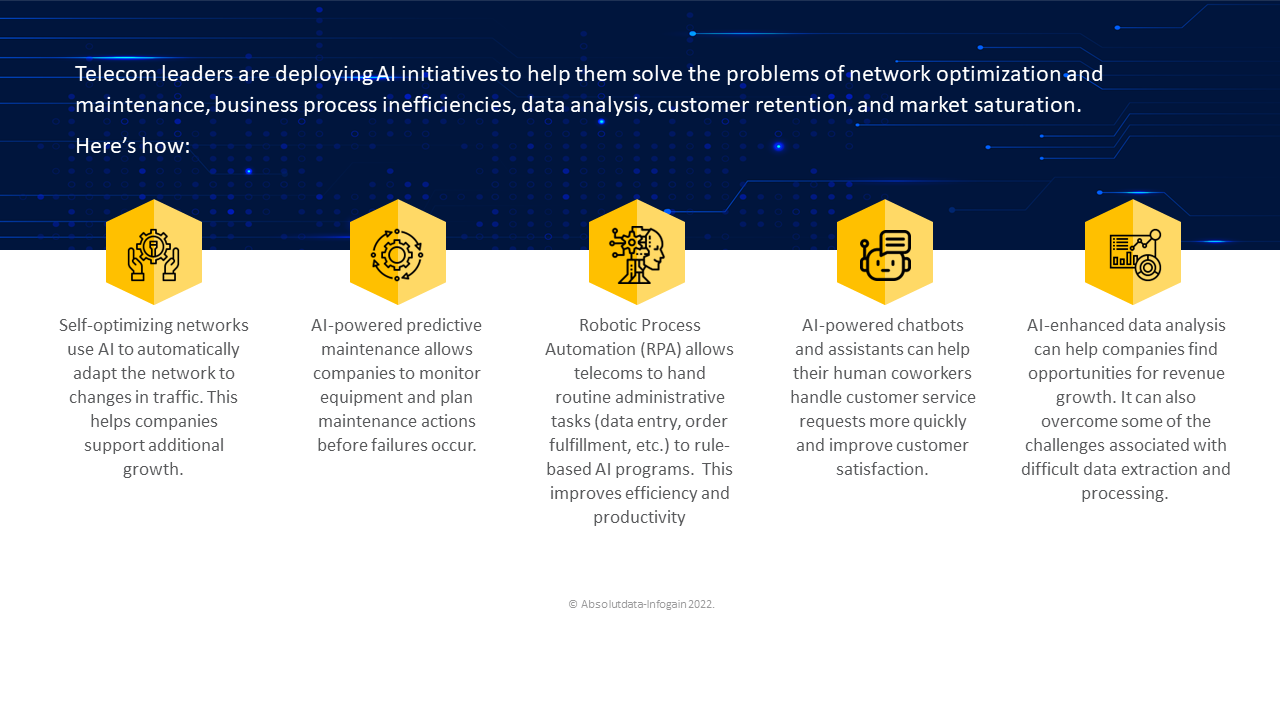In many ways, the telecom industry is well-placed to use AI: communications providers generate lots of data, and the industry as a whole is embracing technologically advanced concepts. In this article, we’ll examine the challenges faced by telecoms and how AI can help solve them.
Telecom Challenges
How AI Can Help Solve Telecom Challenges
Why Haven’t All Telecoms Fully Invested In AI?
Many telecoms have invested in limited AI rollouts that combat specific problems, such as customer retention and engagement. However, the following challenges occur repeatedly as telcos race to implement this new technology:
- Difficulty proving AI’s worth: If decision-makers can’t clearly see the benefits of AI, they won’t endorse its widespread use. Complicating this picture is the fragmentary and small-scale nature of initial AI projects.
- Data problems: These can include a lack of proper data governance or ownership, no visibility into data sources, poor quality data that’s hard to utilize, siloed data, and other issues. These can seriously compromise the effectiveness of any data-driven implementation, which can further reduce leaders’ buy-in (and project funding).
- Technical challenges: The plethora of AI options, techniques, products, and vendors can make it hard to commit. Organizations may also worry about integrating AI with their existing tools, AI’s impact on older systems, and growing end-user adoption.
- Skill gaps: AI skills are expensive and in short supply, making it hard to build an internal team. Upskilling current employees is one alternative, but it’s not always feasible. Non-IT business users also need training on new AI-powered tools.
- Organizational roadblocks: Generating understanding and enthusiasm for AI can be difficult in the face of apathy and indifference. Disappointment in the outcomes of previous projects can also stifle future efforts.
Emphasize Successes and Benefits to Increase AI Buy-In
Telecoms have the data to launch successful AI initiatives. What they need is organizational buy-in and determination to overcome the above-mentioned obstacles. Many well-meaning rules aimed at mitigating costly mistakes have been put in place, and there are always a certain number of nay-sayers to any change. To cut through this, focus on the potential AI has to solve real business problems, like reducing churn, lowering customer acquisition costs, and enhancing network optimization and customer experience.
Related Absolutdata products and services: Analytics, Data Science & AI, Customer Analytics, Marketing Analytics, NAVIK Operations AI, NAVIK Technology AI
































